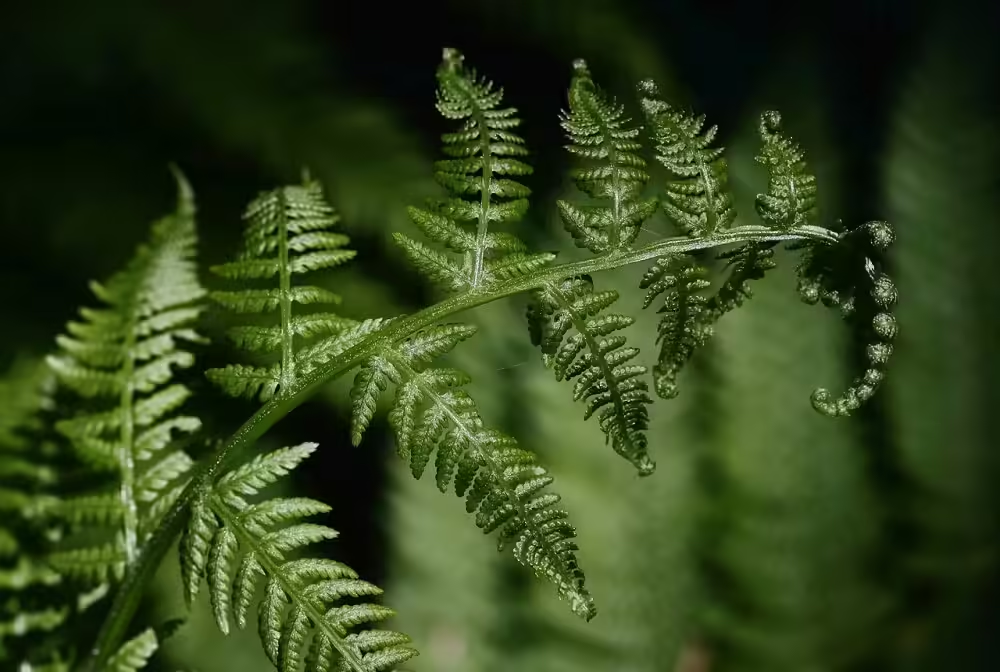Ever walked into a room and felt the air was fresher? Wondered how to get that feeling at home? The answer might be air cleaning plants for home.
These plants do more than look good. They filter out toxins, improve air quality, and bring nature indoors.
Since NASA’s study in 1989, we know some plants purify the air. They remove toxins like formaldehyde and benzene. They also reduce allergy and respiratory risks.
Adding air cleaning plants to your home is easy and healthy. Let’s see how these plants can make your home a clean air sanctuary.
Why Use air cleaning plants for home
Using air cleaning plants is more than a trend. It’s backed by science. A NASA study in 1989 showed plants purify indoor air. They remove harmful toxins, making homes healthier.
Toxins Eliminated by Plants
Indoor air has toxins from cleaning products, furniture, and carpets. Plants absorb harmful toxins like benzene and formaldehyde. They even reduce cigarette smoke and organic solvents.
Reduce the Risk of Allergies and Respiratory Issues
Plants trap dust, pollen, and other irritants. This is great for people with allergies or asthma. They improve air quality and reduce respiratory risks.
Combat Sick Building Syndrome
Sick Building Syndrome (SBS) causes health issues due to poor air quality. Symptoms include headaches and dizziness. Plants can reduce SBS by removing harmful compounds and improving air.
Air Purifying Plants For Home Boost Overall Well-Being
Plants also calm people and improve mood. Studies show they reduce stress and increase productivity. They make homes peaceful and comforting.
Additional Health Benefits for indoor air cleaning plants
- Improve Sleep Quality: Plants like lavender and jasmine release calming scents. They help you relax and sleep better.
- Increase Oxygen Levels: Plants absorb CO2 and release oxygen. This makes the air fresher, even in closed spaces.
- Reduce Indoor Air Pollutants from Cooking and Household Items: Plants neutralize VOCs from cooking and cleaning. This keeps your home healthier.
Eco-Friendly and Low-Maintenance Solution
Many air-purifying plants are easy to care for. They’re a sustainable way to keep air clean, without using energy.
How Air Cleaning Plants for Home Work
Ever wondered how air cleaning plants purify your home’s air? They do it through a natural process called photosynthesis. This isn’t just about their looks; they’re tiny air purifiers!
Natural Air Filters
Plants act as natural air filters. They absorb carbon dioxide and release oxygen. But they don’t stop there. They also take in harmful toxins and pollutants through their leaves.
Once inside the plant, these pollutants are sent to the roots. There, beneficial microorganisms in the soil break them down. This leaves you with cleaner, fresher air to breathe.
Breathing Through the Leaves
Think of plant leaves as your home’s lungs. They absorb toxins like benzene and formaldehyde from household items. These toxins are then removed from the air.
The plant then releases oxygen. This helps balance the indoor air, making it healthier for you and your family.
Roots and Soil: The Secret Powerhouses
The leaves do a lot, but the real magic happens in the roots and soil. After absorbing toxins, the plant sends them to the root zone. There, microbes break down these harmful chemicals.
So, your plant is not just making your home prettier. It’s working with the soil to detoxify your space!
Humidity and Dust Control
Air cleaning plants also regulate moisture levels in your home. They release water vapor, boosting humidity. This is great during dry seasons.
The increased humidity helps reduce dry skin and improve breathing. It also makes it harder for dust and allergens to circulate. It’s like having a natural humidifier, minus the machine!
24/7 Air Refreshment
Some air cleaning plants, like snake plants and aloe vera, are extra special because they can continue purifying the air even at night. While most plants stop producing oxygen when the sun goes down, these plants keep working round the clock, ensuring a continuous cycle of air purification.
How to Choose Your Air Cleaning Plants for Home
Choosing the right air cleaning plants for your home is more than just about looks. Your home environment, lifestyle, and even pets all matter. Here’s how to make the best choice:
Light and Orientation of Your Home
First, consider how much natural light your home gets. Different plants thrive in different light conditions. Snake plants and ZZ plants do well in low light, perfect for dim corners.
On the other hand, plants like areca palms need more sunlight. If your home gets a lot of bright, indirect light, these could be ideal choices.
Pro Tip: Pay attention to the direction your windows face. North-facing windows tend to get less light, while south and west-facing windows often provide the most sunlight throughout the day.
Humidity and Temperature
Certain plants thrive in specific humidity and temperature ranges. Peace lilies and ferns love humid conditions, making them perfect for bathrooms. If your home is dry or cold, choose plants like spider plants or aloe vera.
To help your plants thrive, you can also invest in a humidifier or mist them regularly. This is important during winter when indoor heating can make the air extra dry.
Maintenance Level and Time Commitment
Choosing the right plants depends on how much time you have for care. If you’re always busy, pick easy plants like pothos or snake plants. They need little water and can handle neglect well.
If you love caring for plants, Boston ferns or peace lilies might be perfect. They need more attention, like frequent misting and watering.
Remember, caring for plants means watching for pests and trimming dead leaves. If you’re short on time, start with a few plants and add more as you get better at it.
Space Considerations
The size of your space is key when choosing plants. For small spaces, choose compact plants like parlor palms or English ivy. They fit well on shelves or windowsills.
If you have more room, big plants like rubber plants or Monstera deliciosa are great. They purify the air and add a tropical feel to your home. Learn more about big home plants here.
Think about vertical space too. Use hanging plants or tall stands to make the most of your space.
Choose Pet-Friendly Air Cleaning Plants for Home
If you have pets, pick plants carefully. Some plants, like peace lilies or aloe vera, can be toxic. Choose safe plants like areca palms or Boston ferns for your pets.
Pro Tip: Keep plants out of your pets’ reach. Or, use a plant shelf that pets can’t get to.
Aesthetic and Personal Preference
Consider the style you want your plants to add to your home. Do you like lush greenery or something sleek like a snake plant? The right plant should match your home’s look and your style.
Popular Air Cleaning Plants For Home
Spider Plant (Chlorophytum comosum)
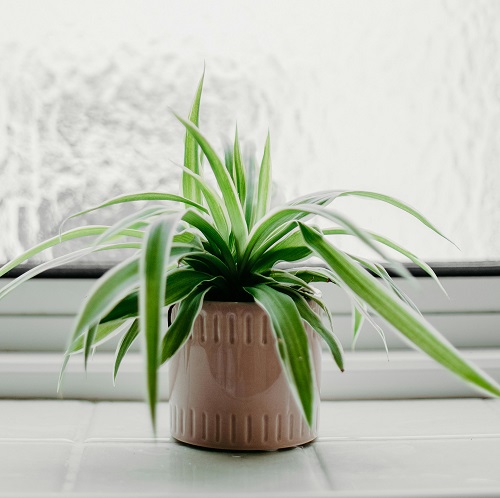
Light, Temperature, Humidity Requirements:
- Light: Bright, indirect light but tolerates low light.
- Temperature: Prefers temperatures between 55-80°F (13-27°C).
- Humidity: Average humidity; adaptable to varying indoor conditions.
Difficulty: Easy
Description: The spider plant is a low-maintenance houseplant with arching green and white striped leaves that add visual interest. It’s known for its “spiderettes” or small baby plants that dangle from the main plant. It thrives in a variety of indoor conditions and is one of the easiest air-purifying plants to care for.
Toxins Eliminated by the Plant: Formaldehyde, xylene
Boston Fern (Nephrolepis exaltata)
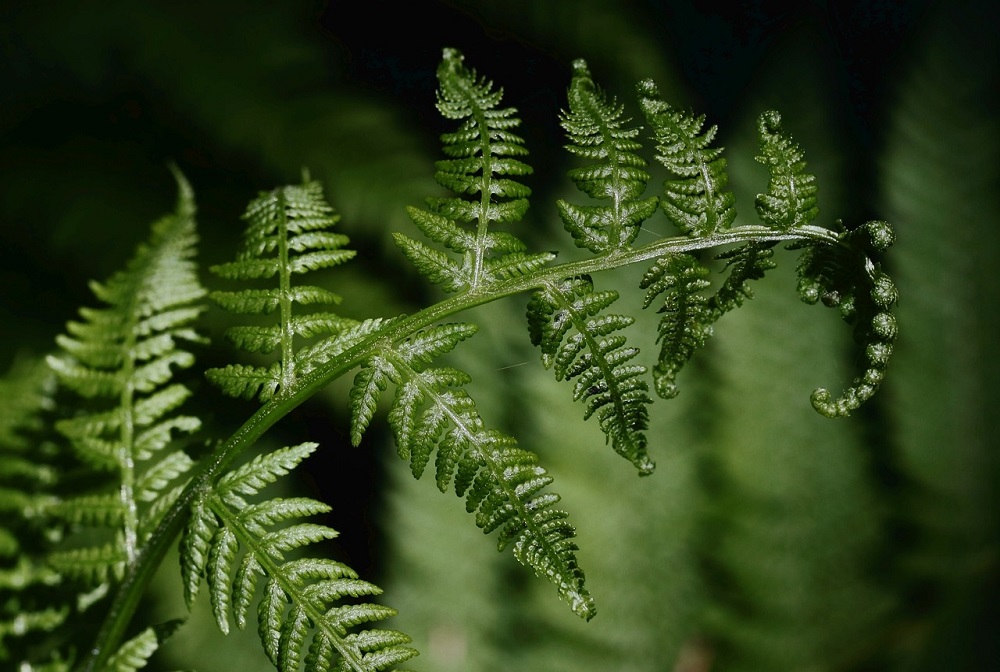
Light, Temperature, Humidity Requirements:
- Light: Indirect light, but not full shade; morning sunlight is ideal.
- Temperature: Between 60-75°F (16-24°C).
- Humidity: High humidity; misting is beneficial.
Difficulty: Medium
Description: Boston ferns are elegant, feathery plants that are especially effective at removing toxins from the air. Though they can be a bit finicky, they thrive in high humidity and cool locations, making them ideal for bathrooms or kitchens. Regular misting and maintaining moisture are key to their health.
Toxins Eliminated by the Plant: Formaldehyde, xylene
Bamboo Palm (Chamaedorea seifrizii)
Light, Temperature, Humidity Requirements:
- Light: Bright, indirect light.
- Temperature: Ideal between 65-80°F (18-27°C).
- Humidity: Prefers moderate humidity but tolerates dry air.
Difficulty: Easy
Description: The bamboo palm is a tall, graceful plant with feathery, arching leaves that can thrive in both homes and offices. It’s not only an effective air purifier but also adds a tropical feel to indoor spaces.
Toxins Eliminated by the Plant: Benzene, formaldehyde, trichloroethylene
Snake Plant (Sansevieria trifasciata) An Indestructible Air cleaning Plant For Your Home
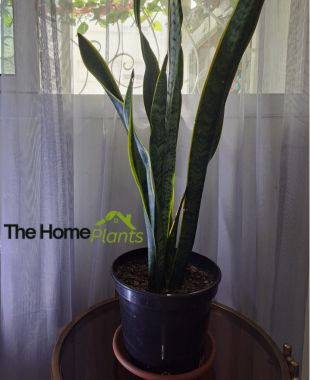
Light, Temperature, Humidity Requirements:
- Light: Tolerates low light but prefers bright, indirect light.
- Temperature: Prefers 60-85°F (16-29°C).
- Humidity: Average indoor humidity.
Difficulty: Easy
Description: The snake plant, also known as the “mother-in-law’s tongue,” is nearly indestructible. Its sword-like leaves grow upright, and it requires minimal care, making it perfect for beginners. It’s also unique because it can convert CO2 into oxygen at night, making it an ideal bedroom plant.
Toxins Eliminated by the Plant: Formaldehyde, benzene, trichloroethylene, xylene, toluene
ZZ Plant (Zamioculcas zamiifolia)

Light, Temperature, Humidity Requirements:
- Light: Low to bright indirect light.
- Temperature: Thrives between 65-75°F (18-24°C).
- Humidity: Average indoor humidity.
Difficulty: Easy
Description: The ZZ plant is a tough, drought-resistant plant with glossy, waxy leaves. Its ability to tolerate low light and neglect makes it ideal for busy households or office spaces. Its upright growth makes it a space-saving, attractive plant.
Toxins Eliminated by the Plant: Benzene, xylene, toluene
Peace Lily (Spathiphyllum spp.)
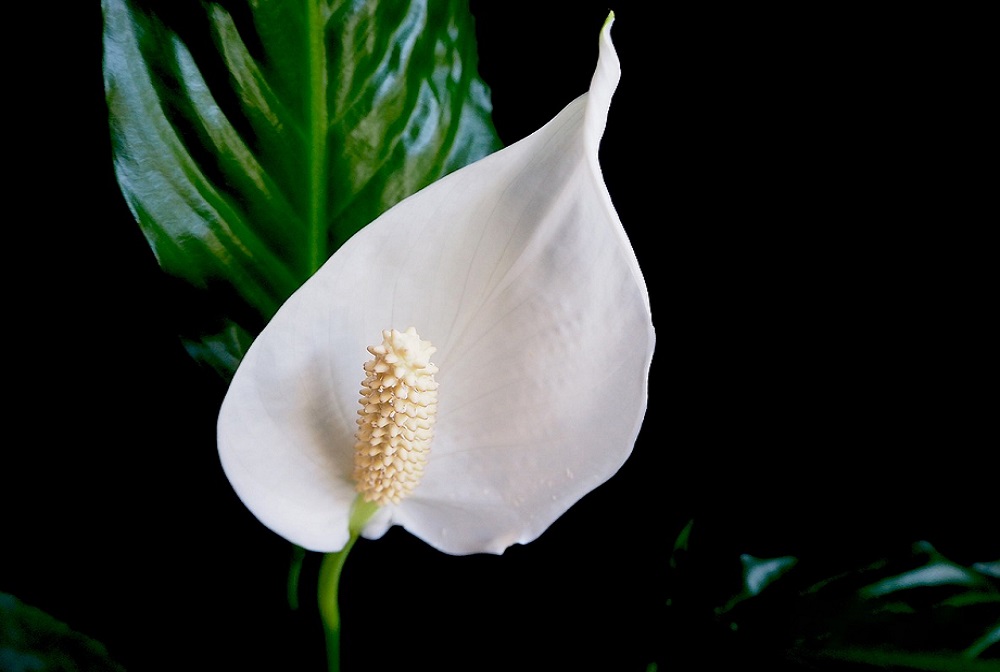
Light, Temperature, Humidity Requirements:
- Light: Prefers bright, indirect light; tolerates low light.
- Temperature: Ideal between 65-80°F (18-27°C).
- Humidity: High humidity; benefits from misting.
Difficulty: Medium
Description: The peace lily is a popular choice for both its beauty and air-purifying capabilities. It has dark green leaves and produces elegant white blooms. While easy to care for, it does prefer consistent moisture and higher humidity levels to truly thrive.
Toxins Eliminated by the Plant: Benzene, formaldehyde, trichloroethylene, ammonia
Chinese Evergreen (Aglaonema spp.)
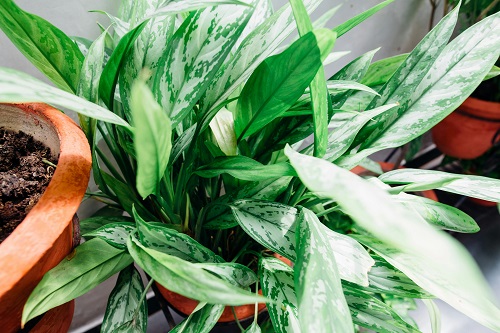
Light, Temperature, Humidity Requirements:
- Light: Tolerates low light but thrives in bright, indirect light.
- Temperature: Prefers temperatures above 60°F (16°C).
- Humidity: Average indoor humidity.
Difficulty: Easy
Description: The Chinese evergreen is a versatile plant with large, variegated leaves that can brighten up any indoor space. It’s highly adaptable, growing well even in low light, making it perfect for rooms with less sunlight. It’s a slow grower but highly resilient.
Toxins Eliminated by the Plant: Benzene, formaldehyde
Areca Palm (Dypsis lutescens)
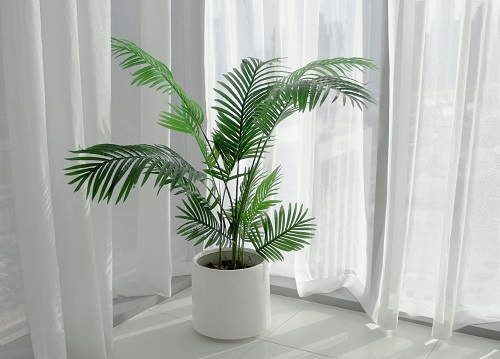
Light, Temperature, Humidity Requirements:
- Light: Bright, indirect light.
- Temperature: Prefers temperatures between 65-75°F (18-24°C).
- Humidity: Moderate to high humidity.
Difficulty: Medium
Description: The Areca Palm, also known as the butterfly palm, is a popular choice for indoor spaces due to its feathery, arching fronds that bring a tropical feel to any room. It can grow quite tall, making it ideal for larger spaces. While relatively easy to maintain, it does require consistent humidity and bright light.
Toxins Eliminated by the Plant: Formaldehyde, xylene, toluene
Rubber Plant (Ficus elastica) Is A Striking Air cleaning Plant For Your Home
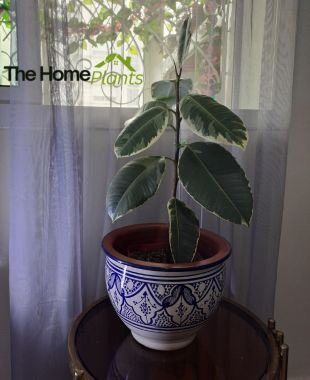
Light, Temperature, Humidity Requirements:
- Light: Bright, indirect light. Tolerates lower light but thrives with more light.
- Temperature: Prefers temperatures between 60-80°F (16-27°C).
- Humidity: Average humidity; can tolerate dry indoor air but prefers some humidity.
Difficulty: Easy to Medium
Description: The Rubber Plant is a striking indoor plant known for its thick, glossy, dark green leaves. It can grow into a tree-like structure indoors, making it a stunning centerpiece. It’s relatively low-maintenance but benefits from regular wiping of its leaves to keep them dust-free.
Toxins Eliminated by the Plant: Formaldehyde
Golden Pothos (Epipremnum aureum)

Light, Temperature, Humidity Requirements:
- Light: Low to bright, indirect light.
- Temperature: Thrives in temperatures between 65-85°F (18-29°C).
- Humidity: Prefers high humidity but adapts to low humidity environments.
Difficulty: Easy
Description: The Golden Pothos is a highly resilient plant with heart-shaped, variegated green and yellow leaves. It’s often called the “Devil’s Ivy” due to its ability to survive in tough conditions. It’s a great option for beginners, as it tolerates low light and irregular watering.
Toxins Eliminated by the Plant: Benzene, formaldehyde, xylene
Aloe Vera (Aloe barbadensis miller)

Light, Temperature, Humidity Requirements:
- Light: Bright, indirect light; can handle some direct sunlight.
- Temperature: Prefers temperatures between 55-80°F (13-27°C).
- Humidity: Low to moderate humidity; drought-tolerant.
Difficulty: Easy
Description: Aloe Vera is a succulent plant prized not only for its medicinal properties but also for its ability to purify the air. It has thick, fleshy leaves that contain a soothing gel, commonly used for skin care. It’s very easy to care for, as it requires minimal watering and thrives in bright light.
Toxins Eliminated by the Plant: Formaldehyde
Dracaena Marginata (Dracaena reflexa or Dracaena marginata)
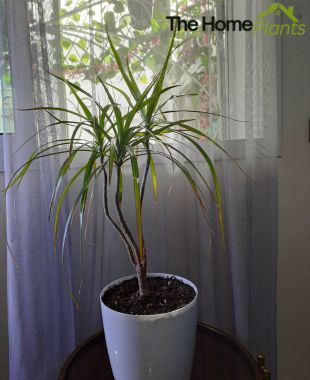
Light, Temperature, Humidity Requirements:
- Light: Prefers bright, indirect light but tolerates lower light.
- Temperature: Between 60-75°F (16-24°C).
- Humidity: Prefers average humidity but adapts to lower humidity levels.
Difficulty: Easy to Medium
Description: Dracaena Marginata, commonly known as the dragon tree, is a beautiful, slow-growing plant with narrow, arching leaves edged in red. It adds a modern touch to any room, and its tolerance for varying light levels makes it easy to maintain. Regular pruning helps to keep it bushy and full.
Toxins Eliminated by the Plant: Benzene, formaldehyde, trichloroethylene
Conclusion On Air cleaning Plant For Your Home
Air cleaning plants for home do more than look good. They improve indoor air quality and make spaces calming and healthy.
From the ZZ Plant to the Spider Plant, there’s a plant for every home and lifestyle.
Whether you’re new to plants or an experienced parent, the right air-cleaning plants will make your home greener and healthier.

